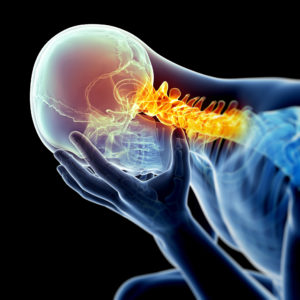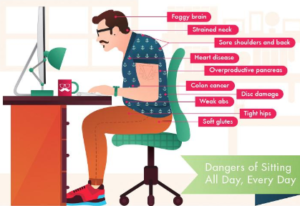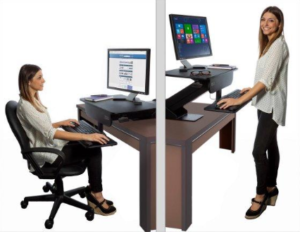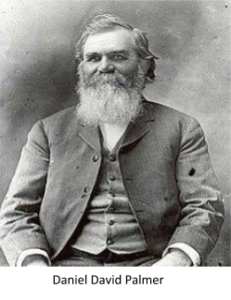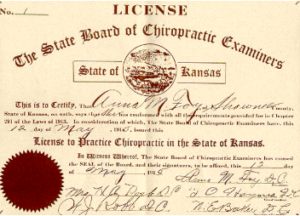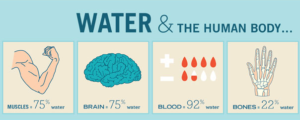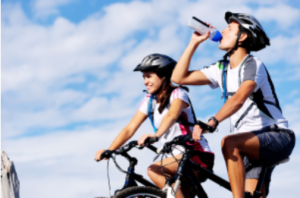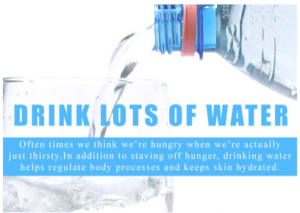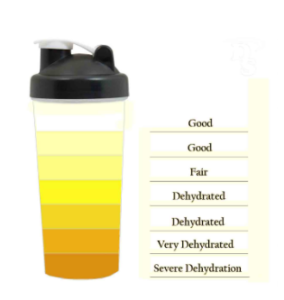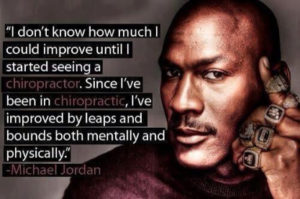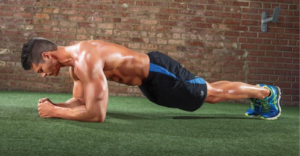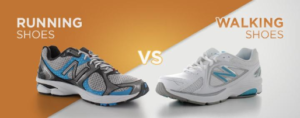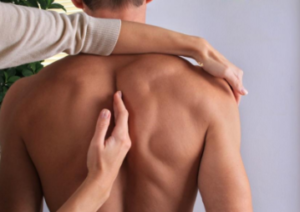
Studies have revealed that American mobile phone users look down at phones an average of 2.7 hours a day, which can cause neck strain over long periods of time. An adult human head weighs about 10 and 12 pounds when looking straight ahead, but that same weight multiples to about 50 to 60 pounds of weight on the neck when hunched over due to the effect of gravity. This is not even including the time spent staring at computer screens, tablets, or televisions.
Symptoms of tech/text neck include the following…
- Headaches
- Neck Pain
- Numbness and tingling in fingers (Radiculopathy)
- Mid back and shoulder pain
- Difficulty breathing
- Acid reflex
- Overall poor posture
- Chronic leading to degenerative changes and arthritis
The effects of long term forward neck posture leads to “long term muscle strain, disc herniations and pinched nerves.” Mayo Clinic Health Letter Vol. 18, #3 March 2000
A recent study shows that 79% of the population between the ages 18 and 44 have their cell phones with them almost all the time—with only 2 hours of their waking day spent without their cell phone on hand.
On a daily basis our modern day society has led to the increase of technological advances that are making our lives more convenient. The problem is how these advances are causing an epidemic in the previous listed symptoms. This is affecting us at younger and younger ages, as today most toddlers can operate our technology better than we can.
How can we correct this?
Prevention is the key to helping avoid tech neck symptoms.

- Hold your cell phone at eye level as much as possible. The same holds true for all screens—laptops and tablets should also be positioned so the screen is at eye level and you don’t have to bend your head forward or look down to view it.
- Take frequent breaks from your phone and laptop throughout the day. For example, set a timer or alarm that reminds you to get up and walk around every 20 to 30 minutes.
- If you work in an office, make sure your screen is set up so that when you look at it you are looking forward, with your head positioned squarely in line with your shoulders and spine.
- Pull your shoulders back and your chin back so your ear is aligned over your shoulders
- Regular chiropractic care, helping to correct postural strain, correct the curve of the neck, and decrease/prevent pain
Exercises to help reduce symptoms:
Chin retraction
Stand up or sit tall in a chair and look directly forward. While keeping the chin level, shift the head backwards for five seconds and then return to the original position. Can be done in the car while pushing head backward against the headrest for added resistance.
Do one set of 15 reps.
Upper trapezius stretch
Sit facing forward. Place the right hand on the head so that the ends of the fingers extend toward the left ear. Then place the left hand behind the back. Use the right hand to pull the head gently down, moving the right ear towards the right shoulder, until a stretch is felt on the left side of the neck. Hold for 30 seconds and gently release. Return to starting position. Repeat on left side.
Do each side three times.
Pectoral stretch
Stand up straight and tuck in the chin. Raise both arms and clasp the hands at the base of the skull with the elbows pointing out to both sides. Pull the elbows back as far as you can and hold the position for 30 seconds.
Do one set of 10 reps.
Scapular retraction with external rotation
Stand tall with your chin tucked in and your arms at your sides, palms facing forward. Retract your scapulae by pulling the shoulder blades closer together and down (shoulders should not move upward toward the ears with this movement). Keeping the elbows straight and turn the palms and arms away from the body so that the thumbs are pointing backward. Hold for 10 seconds and return to the original position.
Do one set of 10 reps.
References
https://www.spine-health.com/blog/modern-spine-ailment-text-neck
Kapandji, Physiology of Joints, Vol 3.
Mayo Clinic Health Letter Vol. 18, #3 March 2000
Rene Cailliet, M.D., Director of the Department of Physical Medicine and Rehabilitation at the University of Southern California
The journal Cephalalgia, 2009 Feb 2
By : Dr Christopher S. Mansolf
(423) 892-0115




